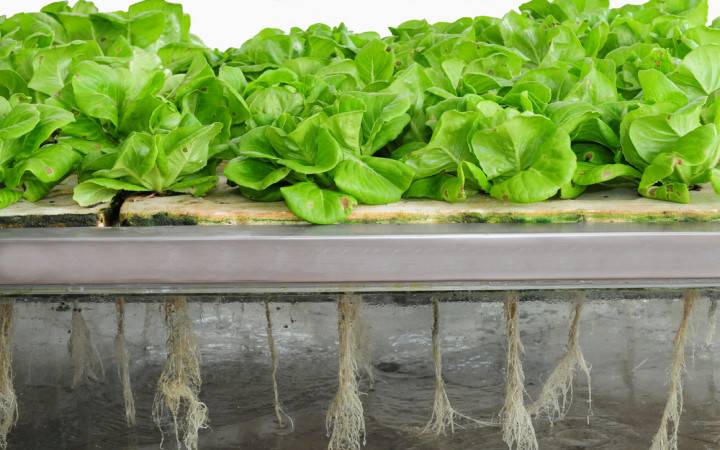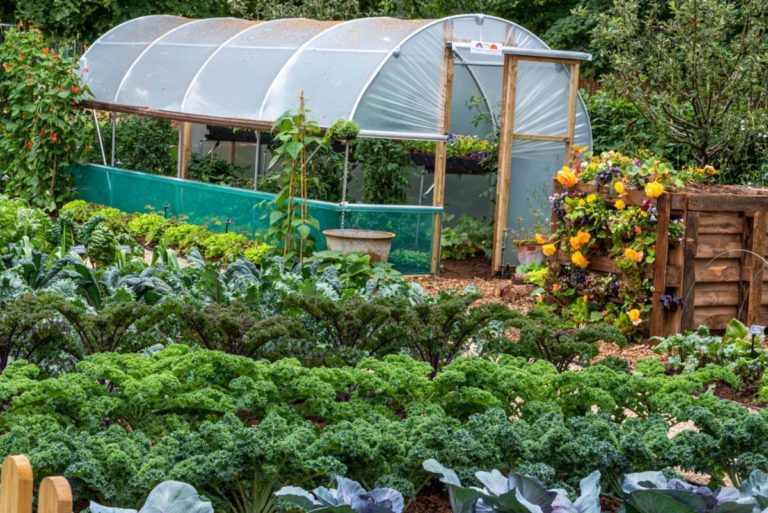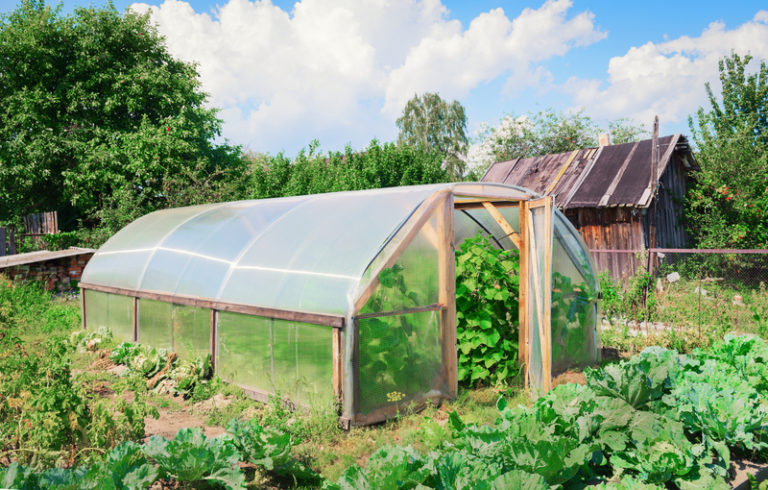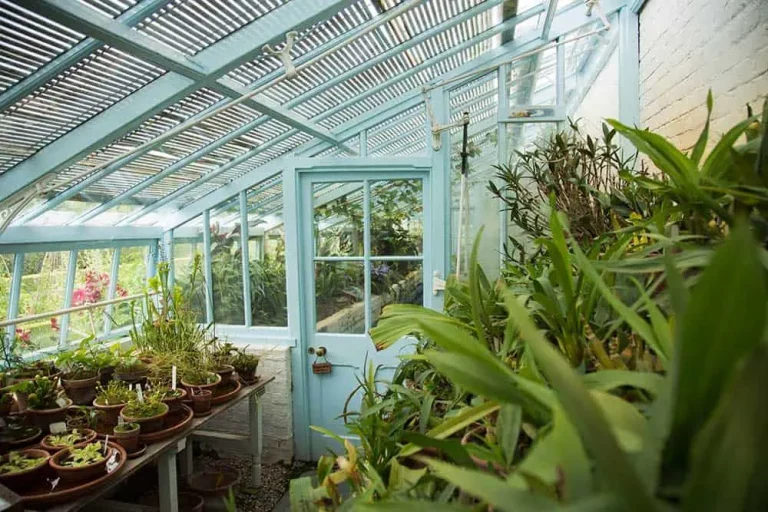Are you looking to revolutionize your gardening game?
Do you want to grow healthier and more abundant crops without the hassle of traditional soil-based methods?
Look no further than hydroponics!
This innovative method of growing plants in a nutrient-rich solution rather than soil offers numerous benefits, from increased crop yields to reduced water consumption.
We’ll explore the basics of hydroponic gardening and how you can use it to grow your favorite fruits, vegetables, and herbs vertically and without soil.
Whether you have limited space or just want to try something new, hydroponics is an exciting solution that will take your gardening skills to the next level.
Choose the Right System
There are various hydroponic systems, so it’s essential to choose one that fits your needs and preferences. Consider factors such as space constraints, lighting requirements, and nutrient delivery methods.
Different systems are better suited for different growing conditions and preferences.
For example, if you have limited space, a vertically stacked system like the NFT (Nutrient Film Technique) or DWC (Deep Water Culture) may be a good choice.
These systems use a continuous flow of nutrient-rich water to feed the plants, allowing for efficient use of space.
On the other hand, if you have ample space and prefer a more traditional gardening experience, a system like EBB (Ebb and Flow) or WFT (Wick Film Technique) may be more suitable.
These systems use a reservoir of nutrient-rich water that is pumped into the grow trays at set intervals, providing a more controlled and predictable growth environment.
Moreover, the lighting requirements of your plants should also be considered when choosing a hydroponic system.
Some systems, like LED grow lights, are more energy-efficient and can be used in smaller spaces, while others, like HPS (High Pressure Sodium) or CFL (Compact Fluorescent Light), require more space and energy to produce the same amount of light.
The nutrient delivery method should be taken into account, as some systems may require more frequent water changes or have specific nutrient requirements.
By considering these factors and choosing a system that fits your needs and preferences, you can ensure a successful and thriving hydroponic garden.
Select the Right Plants
Not all plants are suitable for hydroponic systems. Choose plants that thrive in hydroponic conditions, such as lettuce, herbs, cherry tomatoes, and leafy greens.
When it comes to choosing plants for a hydroponic system, not all plants are created equal.
In fact, some plants are much better suited to the unique conditions of hydroponic systems than others.
For example, lettuce, herbs, cherry tomatoes, and leafy greens are all excellent choices for hydroponic systems.
These plants thrive in the controlled, nutrient-rich environment of a hydroponic system, and are able to produce high yields with minimal maintenance.
In contrast, plants that are heavy feeders or have deep root systems may not do as well in hydroponic systems, as they may require more nutrients or space than the system can provide.
By choosing the right plants for your hydroponic system, you can ensure a successful and productive grow.
Set Up the System
Assemble the hydroponic system according to the manufacturer’s instructions. This may involve setting up the reservoir, pipes, and growing trays.
To set up your hydroponic system, follow the manufacturer’s instructions carefully.
First, assemble the reservoir, which is the tank that stores the nutrient solution for your plants.
This will typically involve attaching the reservoir to a stand or frame, and connecting it to the pipes and pumps that circulate the solution.
Next, attach the growing trays to the system, making sure they are securely fastened and properly positioned to allow for optimal root growth.
The growing trays should be filled with a growing medium, such as rockwool or coco coir, and the nutrient solution should be poured into the reservoir.
Once everything is in place, turn on the pumps and adjust the timer to ensure the solution is circulated and the plants receive the appropriate amount of water and nutrients.
With careful attention to the manufacturer’s instructions, you can successfully assemble your hydroponic system and start growing healthy, thriving plants.
Add Nutrients
Hydroponic systems require a nutrient solution to provide essential minerals and vitamins for plant growth. Choose a high-quality hydroponic nutrient solution and follow the recommended dosage.
Hydroponic systems rely heavily on the use of a nutrient solution to provide essential minerals and vitamins for plant growth.
This solution is typically made up of a combination of macro and micro nutrients, such as nitrogen, phosphorus, potassium, calcium, and magnesium, as well as trace elements like iron, zinc, and copper.
These nutrients are vital for healthy plant growth and development, and a deficiency in any one of them can lead to stunted growth, yellowing of leaves, and reduced yields.
When choosing a hydroponic nutrient solution, it’s important to select a high-quality option that is specifically formulated for the types of plants you are growing.
Different plants have different nutrient requirements, so it’s important to choose a solution that is tailored to your specific crop needs.
It’s important to follow the recommended dosage guidelines for the nutrient solution, as over-fertilizing can be just as harmful as under-fertilizing.
Over-fertilization can lead to an overabundance of nutrients in the solution, which can cause plant damage and even death.
On the other hand, under-fertilization can lead to a deficiency in essential nutrients, which can cause stunted growth and reduced yields.
Therefore, it’s important to carefully follow the recommended dosage guidelines for the nutrient solution, and to monitor plant growth and health regularly to ensure that the solution is providing the appropriate amount of nutrients.
Hydroponic systems rely on a nutrient solution to deliver essential minerals and vitamins to plants, allowing them to grow and thrive.
When selecting a hydroponic nutrient solution, it’s essential to choose a high-quality product tailored to the specific needs of the plants you’re growing.
Different crops require varying levels of nutrients, so it’s important to research the specific needs of your plants and select a solution that meets those needs.
For example, leafy greens such as lettuce and spinach require a higher nitrogen content, while fruiting crops like tomatoes and peppers require more phosphorus.
It’s important to follow the recommended dosage guidelines for the nutrient solution to avoid over- or under-fertilization.
Over-fertilization can lead to an excess of nutrients in the system, while under-fertilization can result in stunted growth and lower yields.
By selecting a high-quality hydroponic nutrient solution and following proper application guidelines, you can promote healthy plant growth and maximize yields.
Monitor Water pH Levels
The optimal pH range for hydroponic systems is between 5.5 and 6.5. Test the water pH levels regularly and adjust as needed to ensure optimal growth.
The ideal pH range for hydroponic systems is between 5.5 and 6.5.
This optimal pH range allows for optimal growth and health of your plants.
A pH level that is too low (acidic) or too high (basic) can hinder plant growth and even cause nutrient deficiencies.
Therefore, it is important to test the water pH levels regularly and adjust as needed to ensure optimal growth.
To test the pH levels, use a pH test kit or pH meter.
These tools can provide accurate readings of the water pH levels and help you determine if adjustments need to be made.
When adjusting the pH levels, it is important to do so gradually.
Sudden changes in pH can shock the plants and cause stress.
Instead, make small adjustments over time to allow the plants to acclimate to the new pH levels.
It’s important to note that the optimal pH range may vary depending on the type of plants you are growing.
Some plants, such as tomatoes and cucumbers, prefer a slightly acidic pH range, while others, such as lettuce and spinach, prefer a slightly alkaline pH range.
Therefore, it’s important to research the specific pH needs of the plants you are growing to ensure optimal growth.
By regularly testing and adjusting the pH levels of your hydroponic system, you can ensure optimal growth and health of your plants, resulting in higher yields and better quality produce.
Maintain Optimal Temperature
Hydroponic plants prefer a temperature range between 65°F and 75°F (18°C and 24°C). Monitor the temperature regularly and adjust as needed to promote healthy plant growth.
Hydroponic plants thrive in a temperature range of 65°F to 75°F (18°C to 24°C).
This optimal temperature range allows for optimal nutrient uptake, photosynthesis, and overall plant growth.
Temperatures that are too high or too low can negatively impact plant growth and can lead to stress, disease, and pest issues.
For example, if the temperature is too high, plants may experience heat stress, which can lead to yellowing or browning of leaves, and reduced fruiting and flowering.
On the other hand, if the temperature is too low, plants may experience delayed growth and reduced nutrient uptake.
To ensure healthy plant growth, it’s essential to monitor the temperature regularly and make adjustments as needed.
This may involve adjusting the lighting, ventilation, or heating and cooling systems in your hydroponic system.
By maintaining a consistent and optimal temperature range, you can promote healthy plant growth and maximize your crop yields.
Provide Adequate Lighting
Hydroponic plants require sufficient lighting to undergo photosynthesis. Provide bright, indirect light for optimal growth.
Hydroponic plants, like all plants, undergo photosynthesis to produce energy and grow.
This process relies on the presence of sufficient light, as it is the energy from light that drives photosynthesis.
In hydroponic systems, it is important to provide bright, indirect light for optimal growth.
Direct sunlight can be too intense and can cause heat stress, while inadequate light can lead to weak and spindly growth.
To achieve the right balance, hydroponic growers should use LED grow lights, which can provide a consistent and adjustable amount of light.
These lights can be placed at a distance from the plants to prevent heat stress and provide an even distribution of light.
Hydroponic growers should consider the color temperature of the lights, as cooler temperatures (around 5500K) are better for plant growth.
By ensuring that hydroponic plants receive sufficient bright, indirect light, growers can promote healthy growth and maximize yields.
Monitor for Pests and Diseases
Regularly inspect your hydroponic plants for signs of pests or diseases, such as insect infestations or fungal infections. Isolate affected plants and treat promptly to prevent the spread of the problem.
To ensure the health and productivity of your hydroponic garden, it is essential to regularly inspect your plants for signs of pests or diseases.
This includes checking for insect infestations, such as aphids, spider mites, or whiteflies, which can weaken your plants and reduce yields.
Look for signs of fungal infections, such as powdery mildew, root rot, or leaf spots, which can cause significant damage to your plants.
If you notice any signs of pests or diseases, isolate the affected plants immediately to prevent the spread of the problem.
This can be done by removing the affected plants from the main growing area and placing them in a separate container or location.
Prompt treatment is essential to prevent the infestation or infection from spreading to other plants in your garden.
Treatment options may include using natural pest control methods such as neem oil or insecticidal soap, or applying fungicides to treat fungal infections.
By regularly inspecting your plants and taking prompt action when necessary, you can protect the health and productivity of your hydroponic garden.
Want More? Dive Deeper Here!
Hey there! If you’re the type who loves going down the rabbit hole of information (like we do), you’re in the right spot. We’ve pulled together some cool reads and resources that dive a bit deeper into the stuff we chat about on our site. Whether you’re just killing time or super into the topic, these picks might just be what you’re looking for. Happy reading!






